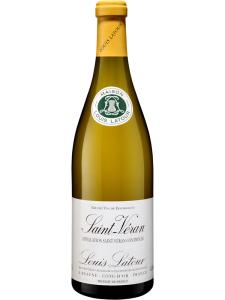Saint-Veran is an appellation for dry white wines produced in the southern half of the Maconnais sub-region of Burgundy. The appellation is roughly divided into two islands, separated by the vineyards of Pouilly-Fuisse.
The northern half is home to the communes of Davaye, Prisse and Solutre-Pouilly, the last of which may produce both Pouilly-Fuisse and Saint-Veran wines. The southern half comprises the communes of Chanes, Chasselas, Leynes, Saint-Amour and Saint-Verand (from which the appellation gains its name). The final 'd' of Saint-Verand was lost due to an administrative error when the appellation laws were being drawn up in 1971.
(© BIVB / Armellephotographe.com)
As the southernmost appellation of Burgundy, Saint-Veran overlaps slightly with the northern edge of Beaujolais. The commune of Saint-Amour, for example, produces white wines labeled as Saint-Veran alongside the fine red Beaujolais Cru wines for which it is more widely known.
In general, Saint-Veran's output is largely composed of wine that would previously have fallen under the less-prestigious Beaujolais Blanc title. The remainder includes wines which, in quality terms, fall somewhere between those of the Pouilly-Fuisse and Macon-Villages appellations.
All Saint-Veran wines are made exclusively from the Chardonnay grape variety. They are traditionally dry in style, yet more full-bodied than other white Burgundies. In their youth, they have floral aromas and notes of white stone fruit, developing into more honeyed, nutty aromas with age. The finest examples show a hint of pierre a fusil – the mineral, flinty aroma so prized in Burgundian white wines.
The climate in the Saint-Veran catchment area is slightly warmer than in most of Burgundy, due to its southerly location. Spring frosts, which so readily threaten vines in cooler Burgundy appellations like Chablis, are less of a danger here. The soils, while not as dominated by limestone as the slopes of neighboring Pouilly-Fuisse, have a fair proportion of chalky clay – particularly in vineyards lining the small Crosne and Arlois rivers.



